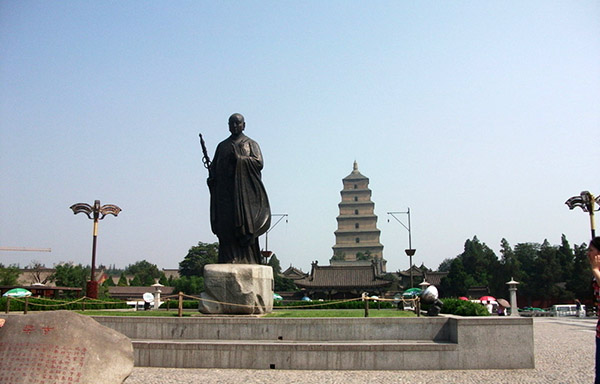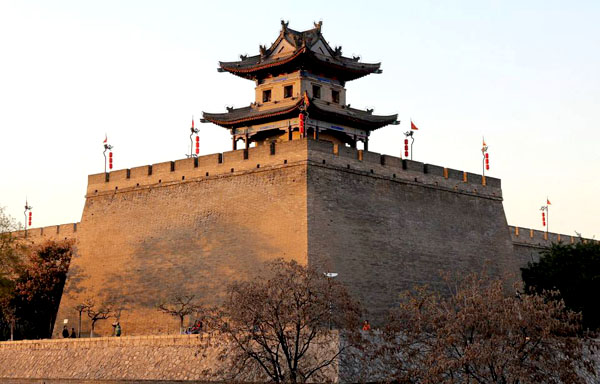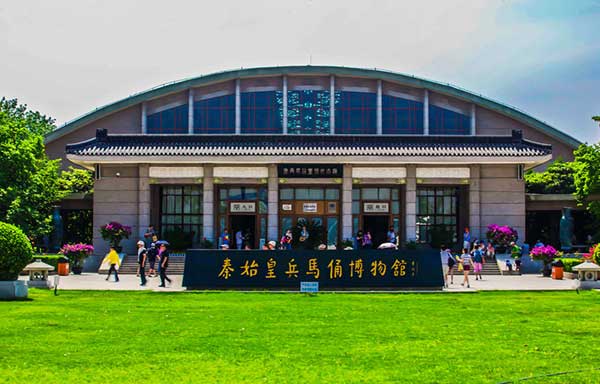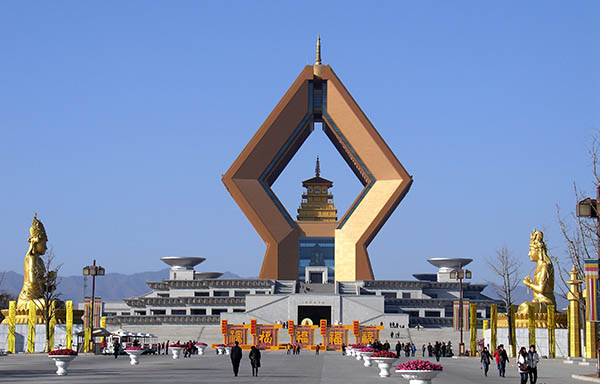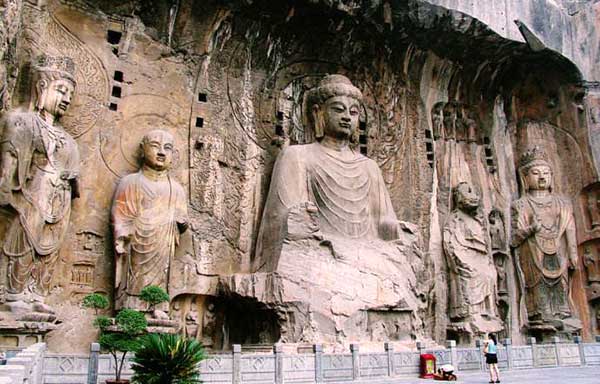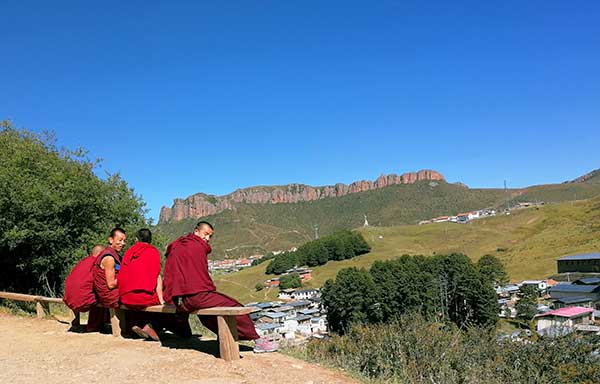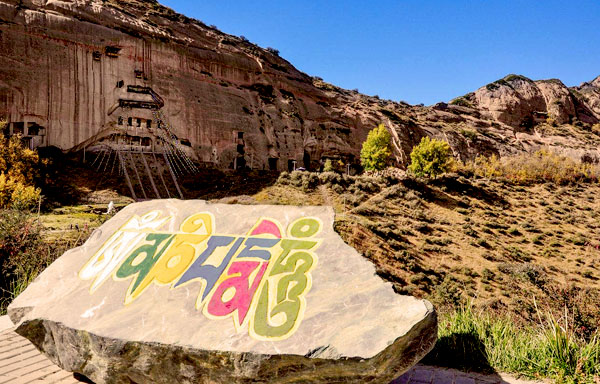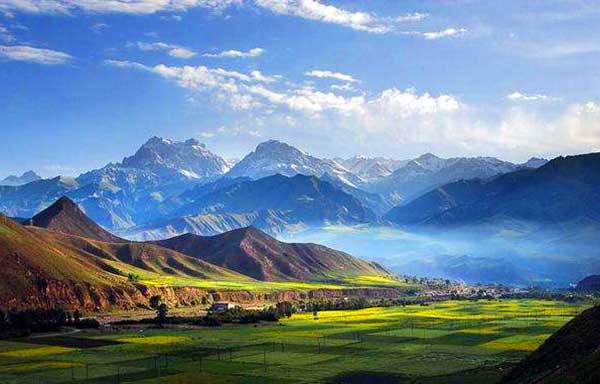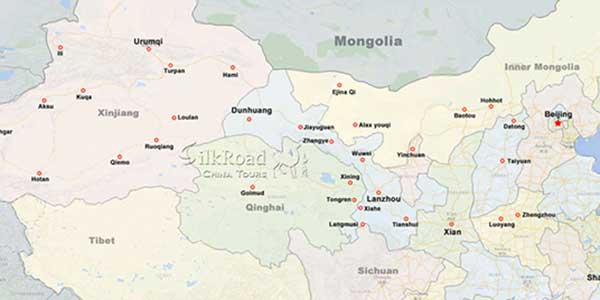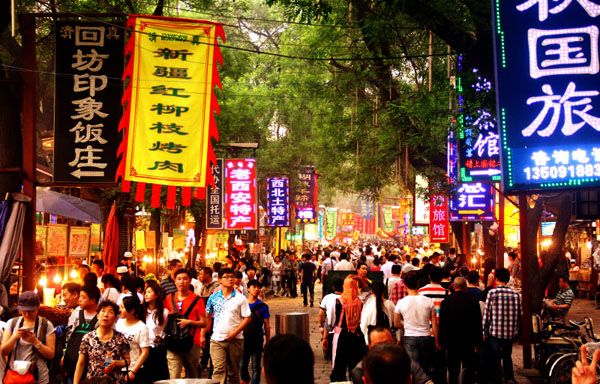 Xi'an Muslim quarter is the most famous food and cultural street in Xi'an, which is on the Must See List of Xian.
Xi'an Muslim quarter is the most famous food and cultural street in Xi'an, which is on the Must See List of Xian.
Located to the north of the West Street in the city center, the quarter covers several blocks inhabitated by over 20,000 Muslims. There are about ten mosques in the area of the Muslim Quarter, among which the Great Mosque in the Huajue Lane is the most famous and popular.
Muslim food and souvenir market is another feature of the area. The Beiyuanmen Muslim Market located just to the north of the Drum Tower is a great choice after the sightseeing in the city center. About 500 meters (about 547 yards) in length from south to north, the street can be reached through the archway under the Drum Tower. This street is paved with dark colored stone with green trees providing heavy shade during summer; the buildings on both sides of the street are modeled on the styles of both the Ming (1368-1644) and the Qing Dynasties (1644-1911). Some of the constructions are restaurants; while others are stores. But here there is one thing in common: the owners are all Muslims.
Walking along this twisted, narrow street which is aligned with stores on both sides, you can see that Muslim men with white hats sit inside the stores and talk leisurely with each other. In front of the doors of some stores, old men with white beards sit on the cane chairs enjoying the tender touch of the sun and having fun with the little children running along the street. The main goods of these stores are authentic hand-making Muslim food which tastes very good. While still there are small stores selling the special local products of Shaanxi Province and yet others provide you with exquisite souvenirs.
As early as the Han and Tang dynasties, Xi'an is the starting point of the Silk Road, traders, envoys, students from ancient Arab, Persian and other places of the Silk Road, traveled a long way to the bustling Capital. They may have lived here for business, study or other missions, later their decedents continued to live here generation after generation. They formed a high degree of cohesion with their religion, in the mainstream of the Han Chinese society, tenaciously adhere to their own unique cultural life, their blood also retains the shrewd businessmen and aristocratic genetic factors. Today there is more than 60,000 Muslims in the Xian, while this a place of heritage of Islamic culture.
Attractions in the area
Related Tours
General Information
Alias: Muslim street
Loc: In the city center
Entrance: 0 RMB
Open Time: All Day
Relevant blogs
-
How did the name of Tianshui in Gansu come about?
The name Tianshui is very pleasant to the ear, and it reminds one of that exquisitely beautiful verse, "After getting drunk, one doesn't know if the sky is in
-
The 8th Silk Road Hotel Festival was successfully held i
On December 27th, the "8th Silk Road Hotel Festival" grandly opened at the Yujing International Hotel in Zhangye. This hotel festival gathered industry experts,
-
The Karez Irrigation System in Turpan has been selected
On September 3rd, at the 75th Executive Council Meeting of the International Commission on Irrigation and Drainage held in Sydney, Australia, the 2024 (11th bat
-
What is the connection between "dragons" and "snakes
In traditional Chinese culture, the snake has a dual identity of auspiciousness and danger. Ancient people believed that the snake not only possesses divine cha
-
Endangered Przewalski's Horses Spotted at Dunhuang Yume
<p>In early February, a group of special "visitors"—the Przewalski's horses—appeared at the Dunhuang Yumen Pass scenic area in Gansu Province, a U
-
The Fourth Dunhuang Cultural Tourism Supplier Conference
On the morning of February 18th, the Fourth Dunhuang Cultural Tourism Supplier Conference in Northwest China commenced at the Dunhuang International Convention






